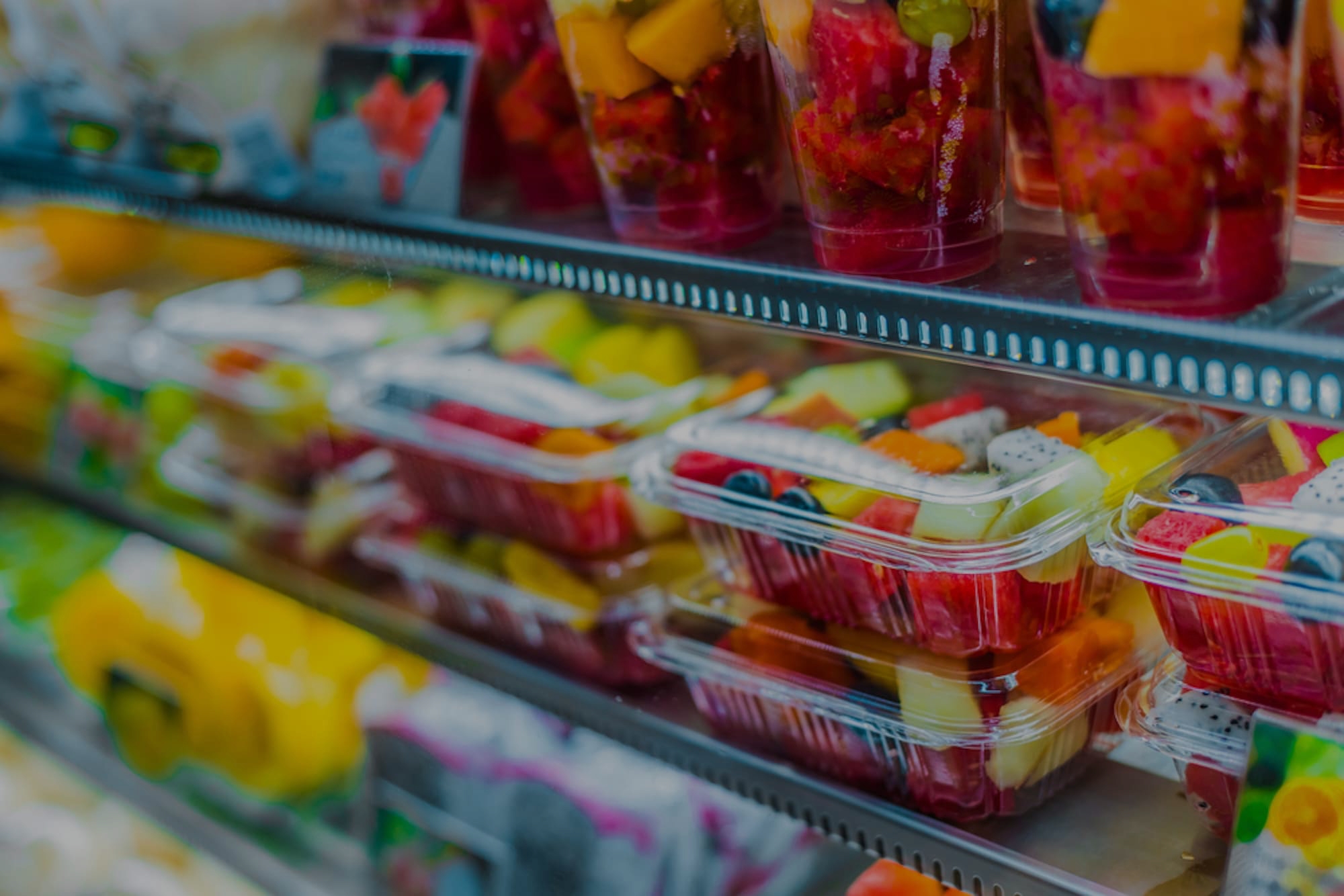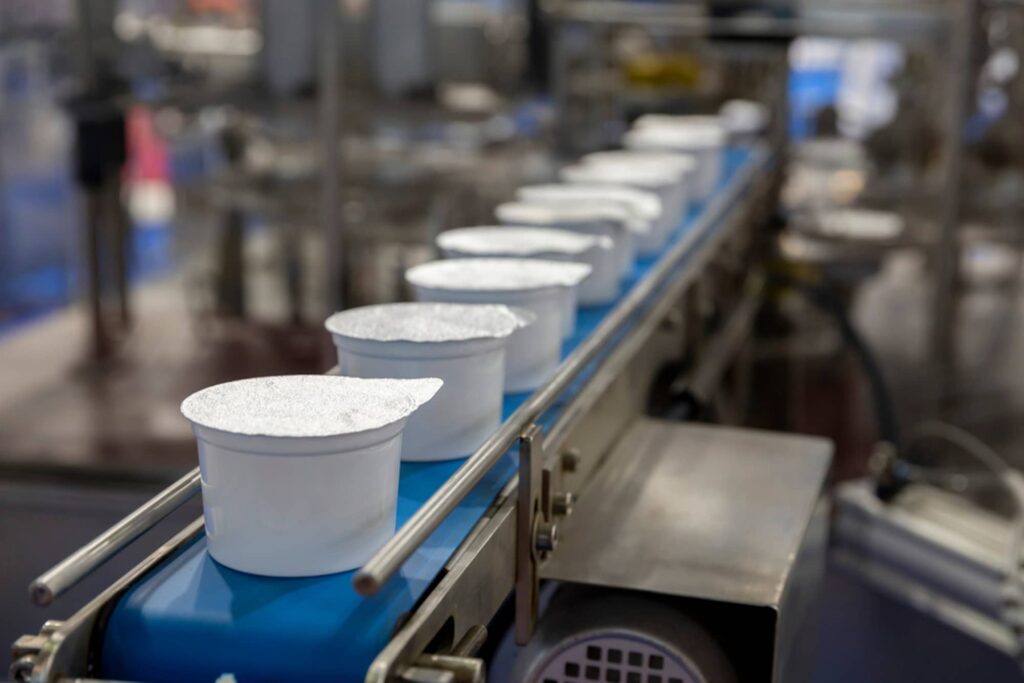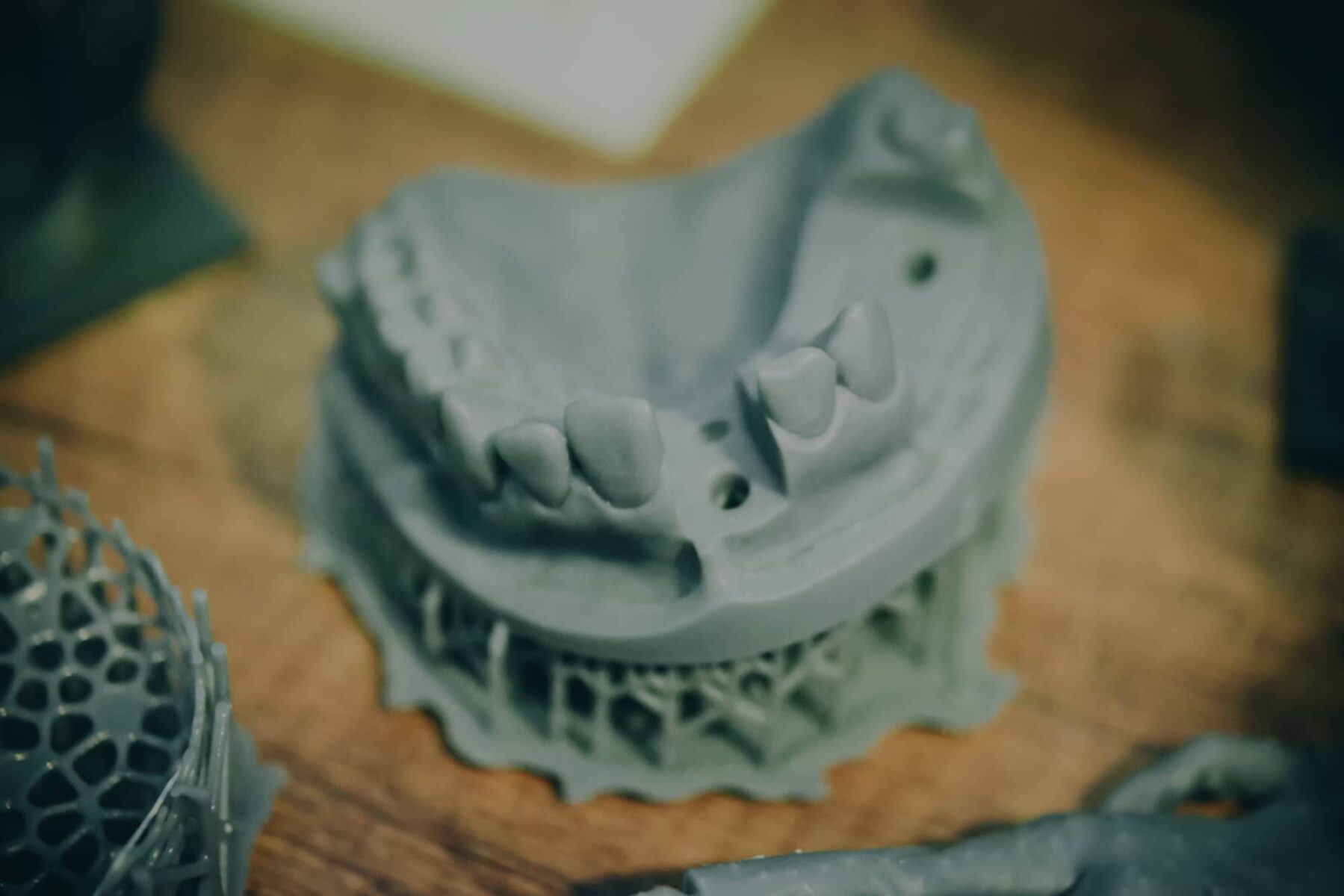Top 5 FDA-Approved Food-Grade Plastics
Published on June 23, 2021

Originally published on fastradius.com on June 23, 2021
Plastic food packaging is essential for maintaining product freshness and quality in transport, prolonging shelf life, and meeting Food and Drug Administration (FDA) regulations. Plastics that come into contact with consumable products must adhere to FDA regulations and use materials guaranteed safe for use in plastic food packaging. This helps ensure consumer safety and protect your business from inadvertently breaking food safety laws.
When it comes to food safety, it’s best to play it safe. Design teams working in the food and beverage industries should know what the best food-safe plastic materials are to ensure products remain safe for consumers. Here’s everything you need to know about the top five FDA-approved plastics for food contact.
Acrylonitrile Butadiene Styrene (ABS)
ABS is an amorphous plastic created by combining acrylonitrile, butadiene, and styrene polymers. ABS is a food-grade plastic safe for use in food processing tools like food processors and refrigerator linings. Excellent resistance to strain and abrasion, maintained impact resistance at low temperatures, and insulating properties make ABS great for food transportation applications as well. This food-safe plastic is very flexible and can easily be welded to complex shapes, adding to its manufacturing diversity.
Parts built with ABS are aesthetically pleasing and stand up well to applications that aren’t in extreme temperatures. However, ABS components are also prone to stress cracking due to ABS’s poor weathering and solvent resistance.
High-Density Polyethylene (HDPE)
HDPE is a thermoplastic often used in milk jugs, plastic water bottles, cutting boards, cereal box liners, grocery bags, and other plastic food packaging. HDPE’s tensile strength, high impact resistance and melting points, and large strength-to-density ratio make it ideal for food and beverage packaging. Also, HDPE is a nonporous polymer, which allows product teams to make long-lasting and easy-to-clean parts that don’t require additional maintenance.
Although HDPE does offer resistance to mildew, mold, and insects, it has poor weathering resistance compared to other materials on this list and it isn’t resistant to oxidizing acids. HDPE is also highly flammable, prone to stress cracking, and non-biodegradable. Further, it’s difficult to bond HDPE with other food-grade plastics, which can limit design and engineering capabilities.
These limitations notwithstanding, HDPE is an excellent choice for creating FDA-approved plastic food containers. For instance, HDPE’s high heat resistance makes it dishwasher safe — an excellent feature for food packaging. Also, HDPE is non-leaching, meaning a disinfectant cleans it quickly but dissolves in time for safe human interaction. Since HDPE is resistant to most chemical solvents, it can prevent harsh chemicals from interacting with food and beverages.

Polyetheretherketone (PEEK)
PEEK is a lightweight and strong semi-crystalline thermoplastic. Due to its high melting point and low coefficient of thermal expansion, PEEK has high dimensional stability. As such, PEEK food handling products can withstand microwave use, dishwasher use, and intense temperatures when cooking directly on heat.
PEEK is safe for direct contact with delicate foods like raw lettuce or fresh dairy products even during the production process. For this reason, PEEK food handling components are used in both food packaging and food production processes. Some common products made from PEEK resin include blenders, kneaders, mixing paddles and scrapers, and valves and nozzles on coffee machines.
PEEK outpaces other food-safe plastics in terms of design flexibility. PEEK can be manufactured with added colorants to make it a vibrant color, which increases process safety since broken or damaged PEEK parts will be immediately noticeable during production. This helps prevent hazardous food and beverage consumption and accidental contamination.
Acrylic (PMMA)
PMMA is a transparent plastic that offers incredible strength and stiffness and can be optically clear. This transparency makes it easy for advanced vision systems or employees performing physical visual inspections to analyze and monitor food product quality throughout transportation.
PMMA is often used to store milk and other dairy products, oils, and feed for animals. Acrylic is also used to create mixing bowls, where transparency can aid mixing and other cooking process applications. PMMA is BPA-free and non-toxic when solid, and it’s so biocompatible that acrylic is frequently used in dentures and cavity fillings.
The limitations of acrylic include poor impact resistance and limited heat resistance, weakness against attacks by organic solvents, and susceptibility to cracking under pressure due to poor wear and abrasion defense. It’s important to consider these downsides when choosing whether or not to use PMMA for food and beverage packaging purposes.
Polypropylene (PP)
PP is a semi-crystalline thermoplastic manufactured through the polymerization of propene. PP is lightweight and moldable but still high in strength, making it an excellent FDA food-grade plastic. It also boasts a high melting point — making it safe for dishwasher and microwave use — low water absorption, and excellent chemical resistance.
Polypropylene can be translucent or opaque and matched to any color. Design teams will have endless opportunities to experiment with aesthetics using this material. Colorful PP food components can also increase process safety and help teams adhere to food safety best practices.
Although polypropylene has a high melting point, it is highly flammable and prone to thermal expansion. These characteristics limit its high-temperature applications. PP is also susceptible to UV degradation, oxidation, and damage from chlorinated solvents. Its poor bonding properties can also limit manufacturing opportunities, so be sure to consider this in your design and material selection process.
Serving up Food-Grade Plastics With SyBridge
When designing parts or products intended for food and beverage handling, consider the many kinds of plastic materials you could use. Some plastics are better for packaging — they are strong, chemically resistant, and tough against stress. Others are better for direct contact with food — they’re safe, resistant to high temperatures, and can be formed into interesting and complex shapes. You also have to weigh plastics that are transparent for visibility against those that utilize bright colors for optimal safety.
A seasoned manufacturing partner like SyBridge can help you sort through these different considerations and choose the FDA-approved plastics for food contact that are best suited to your needs. By feeling confident in your choice of food-safe plastic, you’ll be able to quickly and efficiently manufacture beautiful, high-functioning parts and projects. Contact us today to learn more about food-safe product opportunities SyBridge can offer you.



